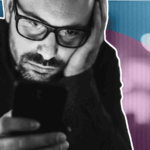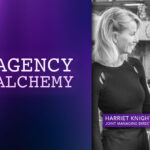Brands need to prioritize true creative thinking or risk irrelevance.
By John Roescher, Founder and CEO, Raw Materials
July 10, 2008: Apple introduced to the world what Steve Jobs called “the biggest launch of my career,” the now-ubiquitous App Store. There were 500 apps available on launch day. There was one app in particular that had me and all my friends geeking out, where each time we hit a button, our phone told us within half a second that we were hearing Ne-Yo’s “Closer.” Never mind that Shazam had existed for years; in your palm, it was transcendent.
The internet was a space for experimentation and ingenuity. When websites and apps — both with a fraction of the possibilities of today’s technology — consistently gave you that Shazam moment. The convergence of iPhones (and Android) with social apps, it seemed every week brought some new form of magic to a screen or gadget near you.
As this wave of digital products was so successful and became so essential to every company’s success, that magic went missing. Instead of focusing on digital invention and creativity, the pressure to grow at all costs meant optimization was the primary objective. Originality was engineered out in favor of “best practices.” Now we find ourselves capsized in a sea of sameness every time we click the once-magical glass portal in our palms.
The influx of new technologies has not stalled. Over the last few years there has been some exciting new piece of technology introduced. Blockchains, NFTs, Generative AI and now Apple’s take on the world of mixed reality. The opportunity to use these technologies is there, the potential is latent, but without creative enthusiasm and the pioneering spirit of bold leaders, they will remain untapped.
It feels like our industry is losing its optimism and succumbing to a postmodern form of cynicism. We are allowing our distrust in tech and other companies that have misused it to drive our vision for how it could be used creatively. We need to bring back that optimistic spirit that only people who trust the power of their creativity can have. The confidence based on the knowledge that creativity can help you make anything better.
It’s time to put creativity at the forefront of everything you do.
Creativity ahead of efficiency, especially when facing massive macro headwinds on top of day-to-day modern business realities, is hard. But the reality that most business leaders have already woken up to is simple: The status quo is dead. Add in those new technologies and external disruptions, and never has there been such a profound imperative for creative approaches to unprecedented challenges.
But how do you build that muscle memory overnight?
It starts by creating environments designed to foster creativity. The type of creativity that comes from doing the work upfront to define the problem the right way, embracing the constraints therein then building teams to explore and execute.
For any creative efforts to be truly novel and impactful, they need to understand their audience better than the audience understands itself. Take Red Bull, which went into the extreme sports business, even going so far as to create new sports. Their innovative marketing efforts opened an entirely new arena to express the brand and distinguish it from its competition.
Operating and competing by being marginally better at doing the exact same thing as your competitors or as what you were doing before may have been a viable strategy during boom times, but that is no longer the case. For the first time since 2009, businesses have to contend with significant economic headwinds. Of course, it’s a much more crowded landscape than it was in 2009, with more competitors battling for attention and wallet share.
Scaling sameness went from the safest strategy to perhaps the riskiest in under a year by pulling best practices off the shelf and optimizing, iterating and doing marginal continuous improvements. It’s time to assess the situation and make a change.
To succeed and prosper, brands must unleash a new wave of creativity in the interconnected, screen-mediated world. It’s not just innovative thinking, but also a fresh way of approaching things. On the micro level, it’s everything from what a button looks like to how you design your teams. On a macro level, it’s about generational, large-scale thinking instead of optimization thinking.
This is our moment where we build a new July 2008, supporting a new class of pioneers who embrace and proselytize new ways to solve problems. Most importantly, let’s lock arms to create and cultivate spaces where creativity is everything, not just the final thing. Not something to be merely sold by the hour.
Sure, there’s a risk in trying something new, but there’s a greater risk in not trying.








